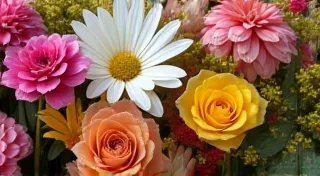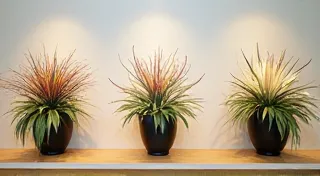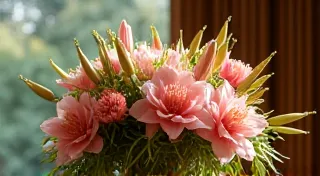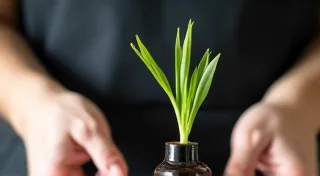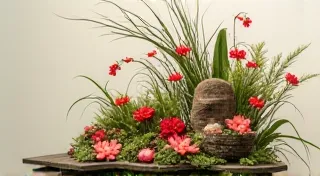Understanding the Symbolism in Ikebana: Meaning Behind the Elements
Ikebana, the Japanese art of flower arranging, is far more than just a visually pleasing display. It's a deeply symbolic practice steeped in Japanese culture and philosophy. Each element – from the choice of flowers and branches to the empty spaces – carries meaning and reflects a worldview rooted in nature, harmony, and respect. This article will explore some of the key symbolic elements you’ll encounter in Ikebana, allowing you to appreciate the art form on a deeper level. Learning about the underlying meanings can truly enhance your experience and appreciation of this intricate art, making you consider the philosophy behind Ikebana and how it seeks to find harmony and balance in the arrangement itself.
The Core Principles: Ten, Jin, Sei
Before diving into specific elements, it's helpful to understand the three core principles that guide Ikebana:
- Ten (天): Represents heaven or space. It’s often embodied by the tallest element in the arrangement, often a slender branch or a tall flower. It signifies aspiration and connection to the divine.
- Jin (人): Represents humanity. This is typically the second-tallest element, signifying the human connection to nature and the role of the arranger.
- Sei (地): Represents earth or ground. This is the shortest element, providing stability and grounding the arrangement.
Symbolism of Flowers
Different flowers hold distinct meanings in Japanese culture and are often chosen to convey specific emotions or messages within an Ikebana arrangement. The selection of flowers is a careful process, reflecting not just aesthetics but also a desire to communicate a particular sentiment. To truly understand this, exploring different types of Japanese flowers used in Ikebana can provide invaluable insight into the richness of their symbolism.
- Cherry Blossoms (Sakura): Represent the fleeting nature of beauty and life, evoking feelings of transience and renewal. Their short bloom period is a poignant reminder to appreciate the present moment.
- Chrysanthemums (Kiku): Symbolize longevity, rejuvenation, and imperial nobility. They are often associated with autumn and are used to celebrate the passing of time and the cycle of life.
- Camellias (Tsubaki): Represent perseverance and resilience, as they bloom even in winter. They are often associated with strength and determination.
- Plum Blossoms (Ume): Symbolize hope and promise, as they bloom early in the year, signaling the arrival of spring. They are associated with overcoming adversity and enduring hardship.
- Iris (Ayame): Symbolize courage, faith and wisdom.
Branches and Stems: More Than Just Support
Branches aren't just structural components; they too carry symbolic weight. The way they are arranged and angled can convey different meanings. The choice of a particular branch isn't arbitrary; it is carefully considered to contribute to the overall message. Observing how these elements interact within an Ikebana arrangement can teach a lot about the philosophy behind this art form.
- Pine Branches: Represent steadfastness, resilience, and loyalty. They symbolize endurance and the ability to withstand hardship.
- Bamboo: Symbolizes strength, flexibility, and grace. It represents the ability to bend without breaking, adapting to challenges.
- Willow Branches: Represent flexibility, resilience and harmony.
The intentional use of empty space, known as "Ma," is crucial in Ikebana. It’s not just about what's present, but also about what’s *not* present. "Ma" allows the eye to rest, encourages contemplation, and highlights the beauty of the individual elements. It fosters a sense of peace and allows for a deeper appreciation of the overall composition. It is a key component of the Wabi-Sabi aesthetic – finding beauty in imperfection and impermanence. Understanding the role of "Ma" is crucial to truly grasping the art form’s profound impact.
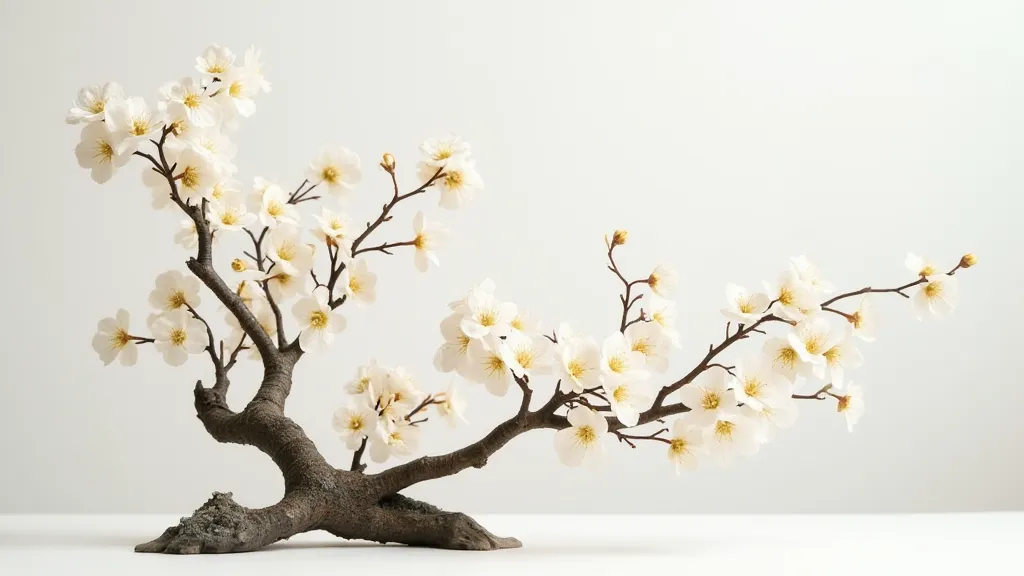
Color Symbolism
While not as rigid as in some other cultures, color also plays a role. Generally:
- Red: Represents passion, energy, and sometimes even aggression.
- White: Represents purity, simplicity, and reverence.
- Yellow: Represents warmth, joy, and light.
- Green: Represents nature, growth and harmony.
Ikebana isn't simply about combining flowers and branches; it's deeply intertwined with the cyclical nature of the seasons. The materials used, and their arrangement, are often dictated by the time of year. The selection of flowers also changes drastically, reflecting the unique beauty of each season. This seasonal consideration adds another layer of meaning to the arrangement, connecting the art form to the natural world and the passage of time. When exploring this aspect, it's fascinating to examine seasonal Ikebana arrangements and learn how they are created.
Beyond the Elements: Conveying Emotion
Ultimately, Ikebana is a form of artistic expression. The arranger uses their understanding of symbolism to convey a specific emotion or message. Whether it's a celebration of life, a reflection on loss, or a simple expression of gratitude, Ikebana offers a powerful way to connect with nature and express oneself. This ability to communicate profound emotions through carefully arranged natural elements is what truly elevates Ikebana from a simple craft to a deeply moving art form.
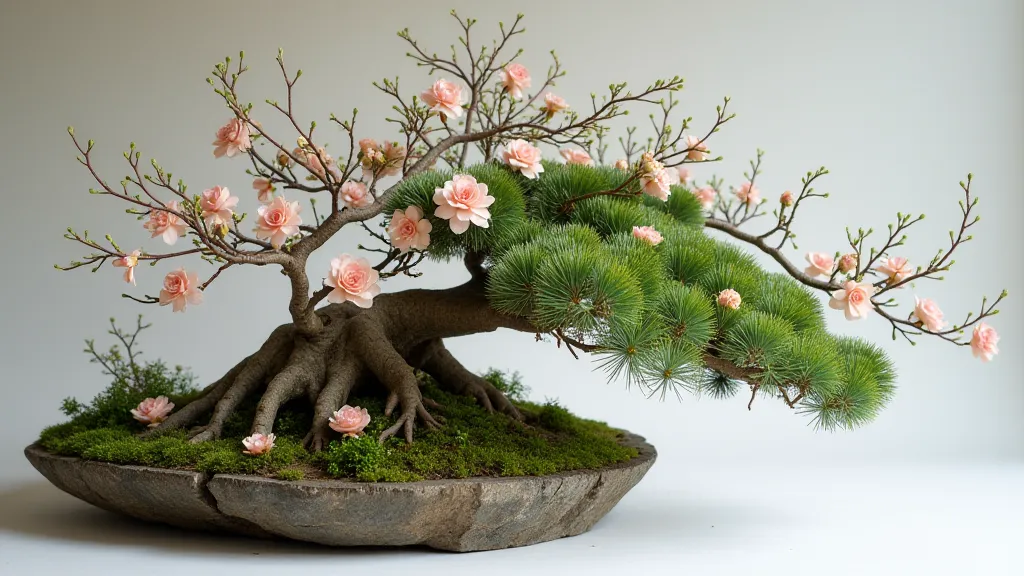
The principles and symbolism within Ikebana are more than just aesthetic guidelines; they represent a philosophical approach to life, emphasizing harmony, balance, and an appreciation for the beauty of imperfection. This deeply ingrained philosophy shapes every aspect of the arrangement process, from the selection of materials to the final placement of each element. To truly understand this connection, one must explore the broader philosophy behind Ikebana and its role in Japanese culture.
As you continue to learn Ikebana, pay attention not only to the technical aspects of arrangement but also to the underlying symbolism. This deeper understanding will enrich your appreciation of this beautiful and profound Japanese art form. Consider experimenting with different combinations, observing how the subtle shifts in placement and choice affect the overall feeling conveyed by the arrangement. Remember, Ikebana is not just about following rules; it's about expressing yourself through the language of nature.

